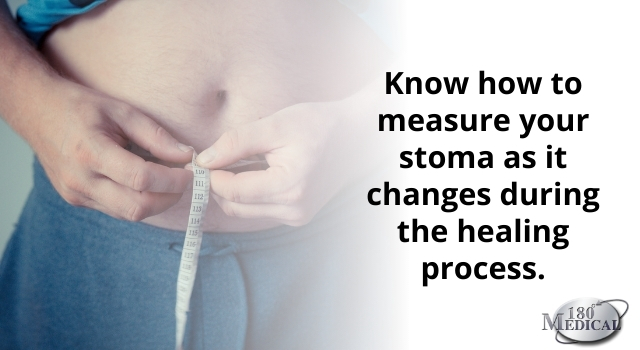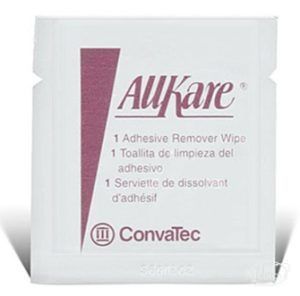
Have you recently had or are you about to undergo ostomy surgery? Adjusting to life with an ostomy bag can be challenging, especially during the healing period after surgery. However, because each person with an ostomy is unique, each individual’s experience with a new ostomy may also differ.
The key to an optimal experience adjusting to your new ileostomy, urostomy, or colostomy bag is having the right resources, ostomy products, and support. So, let’s start with these top ten tips for the transition to life with an ostomy bag.
10 Tips for Adjusting to Life with an Ostomy Bag
During the first few weeks and months after ostomy surgery, your body will need time to heal and recuperate. In addition, you may be going through emotional, physical, and day-to-day adjustments as you transition to life with an ostomy bag.
Emotional Adjustments After Ostomy Surgery
After ostomy surgery, you may go through a variety of feelings about your new ostomy bag. Let’s go over some tips related to these changes.
1. Know that emotional changes are normal.
During your ostomy surgery recovery, it’s normal to go through a lot of feelings. After all, you’ve just gone through a surgery that has changed your life. Now, you’re responsible for a new stoma and all that goes with it, such as daily ostomy pouch changes and peristomal skincare.
If you’re feeling stressed or overwhelmed during this time, that’s completely natural and normal. While some people may feel good right away about their ostomy, others may experience grief, anger, low self-esteem, or sadness.
Focusing on the positive aspects of your new ostomy may help you cope and adjust. However, we know it’s not always easy to think optimistically right after a major life change. So be patient with yourself and remember you’re not alone. 1 in 500 Americans also lives with an ostomy. With support, the right ostomy supplies, and time, we know you’ll get through this challenging transition.
2. Know when to reach out for help.
It’s normal to feel down sometimes, especially after a major surgery like getting an ostomy. However, when those negative feelings stick around for a long time, it could be a sign of depression. Take a look at some of the following symptoms that may indicate depression.
- Apathy about activities you used to enjoy
- Feelings of hopelessness
- Anxious or suicidal thoughts
- Fatigue
- Irritability
- Sleep changes (sleeping too much or too little)
- Persistent sadness
If you or a loved one are experiencing any of the above symptoms, it may be time to get help. Talk to your doctor or another qualified healthcare practitioner about your options for treatment. There’s no shame in getting help when you’re going through a difficult time.

3. Find a sense of support and community.
Talking to other people who know what it’s like to live with an ostomy can be a great first step toward gaining confidence and feeling supported. You may even start feeling like yourself again. Hearing from other ostomates and finding out their personal tips and experiences may be a great source of comfort and help.
You can find inspiration and support from fellow ostomates by joining the Convatec me+ online community or by finding a virtual or in-person ostomy support group.
Also, talk therapy may be a great option if you prefer to have one-on-one, private conversations. Seeing a certified counselor, psychiatrist, or therapist may help you discover healthy ways to cope and thrive with your new ostomy.
Physical Adjustments and Getting Used to a New Ostomy Bag
In addition to emotionally adjusting, you’ll no doubt encounter some physical changes that you’ll grow accustomed to with time.
4. Know your stoma will change over time as it heals.
After ostomy surgery, you’ll begin to see some changes to your stoma, which is the opening on the abdomen that waste passes through. It may alter in size and shape during the weeks following your discharge from the hospital.
During the postoperative period, your stoma will likely be swollen. However, over time, typically between 6 to 12 weeks, your stoma will begin to shrink. Be prepared for these changes by knowing how to measure your stoma.
As these size changes occur, we encourage you to stay in touch with our team of Ostomy Specialists at 180 Medical. Our staff is highly-trained on common ostomy issues and ostomy product solutions. Plus, we can help you by adjusting your orders to accommodate for skin barrier size changes and any other ostomy product needs you may have.

5. Learn how to apply, change, and empty your ostomy bags.
Caring for a new ostomy bag can feel alien at first. However, with practice and time, you’ll find that applying and changing your ostomy pouch may become second nature to you.
After your surgery, your doctor or ostomy nurse likely went over the steps of how to apply and change your ostomy bag. Of course, when you get home and you’re alone, it may feel overwhelming to know what to do on your own.
180 Medical provides plenty of helpful resources for learning how to change, apply, and empty your ostomy pouch, including these instructional videos.
Additionally, if you have more questions about your pouching routine, our Ostomy Specialists at 180 Medical can connect you to a team of certified ostomy nurses who can help you with any questions or concerns regarding your ostomy.
6. Practice proper peristomal skincare to help minimize skin irritation.
Skin irritation can be a common problem for people with an ostomy bag. Because some kinds of peristomal skin irritation may interfere with the adhesive properties of ostomy appliances, it’s important to both prevent and treat wounds and rashes around or under your ostomy skin barrier.
So what causes peristomal skin irritation? It could be due to a variety of issues, such as:
- An allergic reaction
- Build-up of adhesives
- Improper seal causing ostomy pouch leakage
- Trapped moisture
- Poor-fitting ostomy appliances
- Overfrequent skin barrier changes
These are just a few of the ways your peristomal skin could become irritated. When you notice signs of skin irritation like rashy, red, or weepy skin, talk to your doctor or connect with an ostomy nurse.
In addition, our team of Ostomy Specialists can help you try out ostomy products and accessories to find a solution, such as protective stoma powder, skin barrier spray, or adhesive remover wipes.
Additional Adjustments and Considerations for Life with an Ostomy
7. Minimize odors associated with ostomy bags.
Concerned about odors coming from your new ostomy pouch? You have a variety of options for reducing odors in your ostomy bag. One popular option is to purchase odor-eliminating liquid drops or another type of pouch deodorizer. Additionally, you may find that having an ostomy pouch with a charcoal filter can help reduce ostomy pouch odors, such as the Natura + Two-Piece Drainable Ostomy Pouches.
We also offer more detailed information and tips for reducing ostomy odors here.
8. Learn how to conceal your ostomy bag under clothes.
If you’re worried that people will be able to see your ostomy bag, don’t be. Today’s ostomy pouches are designed to be more discreet and lay flat against your body beneath your clothes.
However, we understand that sometimes gas can build up inside ileostomy and colostomy bags. While this is natural, one common recommendation is to buy an ostomy bag with a charcoal filter, which helps filter out the gas and reduce pouch ballooning.
Also, it’s often recommended to empty your ostomy bag when the contents fill to around one-third of the pouch. This reduces the weight on the barrier, which may also help prevent potential pouch leakage.
Finally, it is essential to find an ostomy bag system that works for you and your lifestyle. You can choose from a wide variety of sizes, lengths, colors (including transparent), and one-piece or two-piece pouch systems.
9. Plan ahead before traveling with an ostomy bag
Now that you have an ostomy to care for, your daily life may change a bit. In addition to learning how to apply, empty, and change your ostomy pouching system, you’ll also need to plan in advance for the times you’ll be away from home.
For example, if you plan to be away from home for a day at work, you’ll need to bring along any ostomy supplies and accessories you use throughout the day and emergency back-up supplies.
We also share some helpful tips for traveling with an ostomy, including dealing with airport security lines, as well as how to calculate how many supplies to bring with you on your trip.
10. Get the okay from your doctor before starting physical activity again.
Lastly, as you begin to heal, you may start feeling better, too. You might even feel ready to get back to a regular exercise routine. However, it’s important to take it easy and let your body fully recuperate after major abdominal surgery.
First, wait to get the green light from your doctor. Once you’ve fully healed and your doctor has given you the okay to start exercising again, start slowly and carefully.
While some people fear that having an ostomy means they won’t be able to be physically active anymore, that’s not typically true. Many people with ostomies can exercise, including lifting weights, yoga, biking, running, and more. You may find that an ostomy wrap or an ostomy belt may provide the additional security you need during physical activity with an ostomy.
Where to Find Ostomy Supplies Online
180 Medical, one of the leading national suppliers of high-quality ostomy supplies, has nearly two decades of experience providing home-delivery medical supplies to help turn lives around.
Our highly trained Ostomy Specialists have helped thousands of customers adjust to life with an ostomy bag. We offer support and ostomy resources to help make this transition as smooth as possible. We’re ready to answer your questions and help you find the right ostomy products for your unique needs so you can start feeling confident, comfortable, and secure.
Contact us today to get started on your first order of ostomy supplies.






